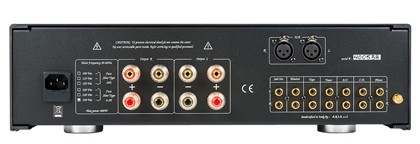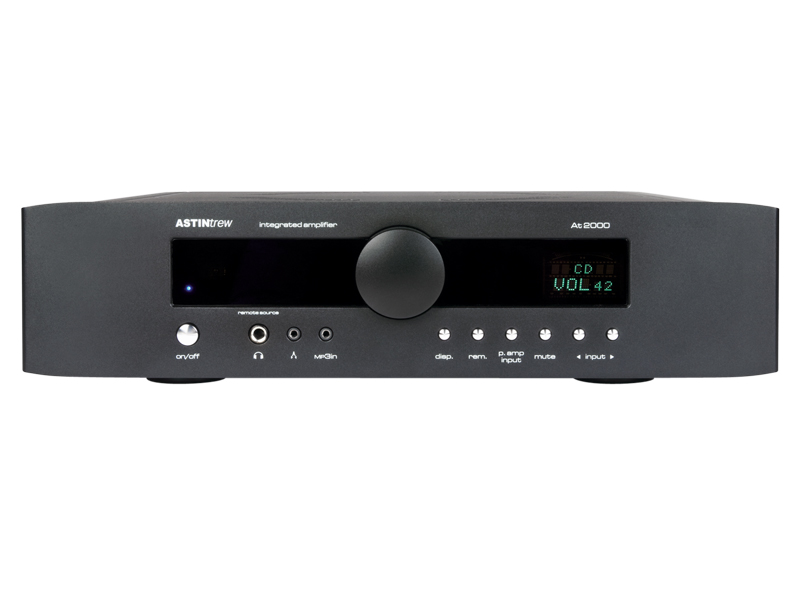TechRadar Verdict
A solid amplifier with some good tech under the hood. Bass is not as detailed as some but the build quality and pleasing sound make up for it
Pros
- +
Assembly is neat and tidy
- +
Very pleasing sound
- +
Good rhythm and sweet treble
- +
Bass is solid and well-defined
- +
Stereo imaging
Cons
- -
Bass is not as detailed as other amplifiers available
Why you can trust TechRadar
'Designed in Britain', says the literature for the Astin Trew AT2000Plus – though construction is actually Chinese.
Wherever it was put together, though, this amp offers some impressive material value for money. Indeed, it seems to tick an unusually large number of boxes.
Valves, multiroom capability, front-panel MP3 input, balanced input and output, high-grade coupling capacitors (along with some fancy cable, contributing to the 'plus' bit of the model name). If Astin Trew wants this to look like the amp for everyone, its doing well so far.
As always, the big question hanging over such a product is whether sound has been sacrificed to the fill the feature count.
The listening is the crucial test, but just casting an eye over the internal appointments suggests that AT has not scrimped in any obvious ways on sound related parts.
The valves may be the 'big news' but there is only one per channel and it's certainly not handling the output – that's done by a pair of MOSFET devices, a complementary pair, of a type designed specifically for audio applications. They are fixed directly to the side panels of the amp, which thus act as both structure and heatsink.
Inputs are switched by relays, while balanced inputs and outputs (including the multiroom outputs, which use Ethernet-style connectors suitable for 'CAT5' cable) are treated with good-quality dedicated balanced line drivers and receivers.
Assembly is neat and tidy, but the circuit boards are awfully cramped in places. Luckily the valves are clearly running at quite low current, so there's not a huge amount of heat coming off them.
The electronic volume control is configured with one decibel steps across most of the range, though the top few decibels are in 0.5-decibel steps – pointless, really, since most of us will never use this part of the range.
Sound quality
The valves may show some character in the measurements, but as far as sound is concerned it seems the AT2000Plus does lots of good things, without standing out in any particularly remarkable way – and if that sounds like damning with faint praise, do bear in mind that standing out too much can be a distinctly double-edged sword!

If there is one respect in which this amp is clearly differentiated from the rest, it's the way in which it combines a slightly warm, smooth balance with really sparkling treble when needed. This is a bit of a paradox, for sure, but not one you'll want to complain about: think of it as an unusual degree of lack of harshness and it may seem less perplexing.
As usual with modern amps, the frequency response is not part of this (seeing as it's as flat as the proverbial), but whatever the cause the treble is sweet, almost to the point of recession, but still with enough 'zing' to handle intrinsically bright sounds like cymbals very naturally.
At the other extreme of the spectrum, the bass is solid and well-defined, causing our listeners to be very impressed with the special effects at the start of the Michael Jackson track (spooky footsteps etc.). The same quality does very well by piano, which sounds big and believable.
Just occasionally it seemed that the bass was a little less detailed than some, while orchestral cellos and basses could use a little more precision. Stereo imaging is good and the sound has plenty of pace to it across the board.
A confident dynamic spread makes for equally assured handling of forces large and small. The balanced input (assessed after the main 'blind' listening test) is, if anything, a shade more transparent than the unbalanced ones, but the basic sound is largely the same.
Follow TechRadar Reviews on Twitter: http://twitter.com/techradarreview
The TechRadar hive mind. The Megazord. The Voltron. When our powers combine, we become 'TECHRADAR TEAM'. You'll usually see this author name when the entire team has collaborated on a project or an article, whether that's a run-down ranking of our favorite Marvel films, or a round-up of all the coolest things we've collectively seen at annual tech shows like CES and MWC. We are one.
